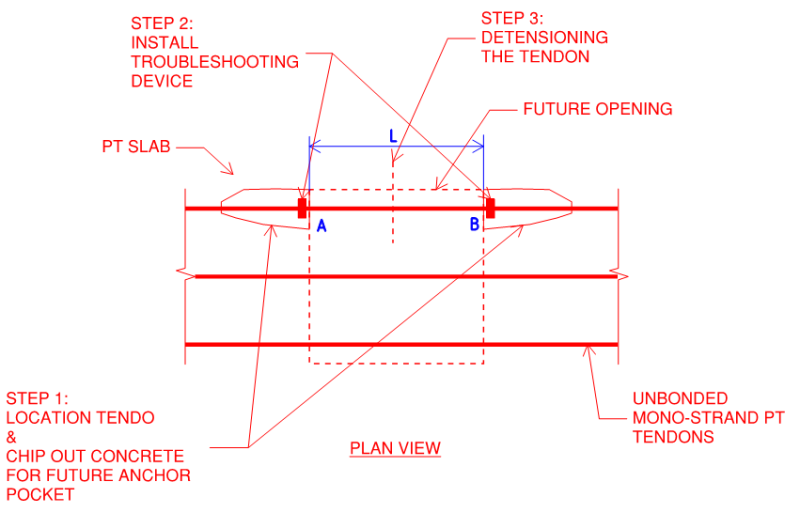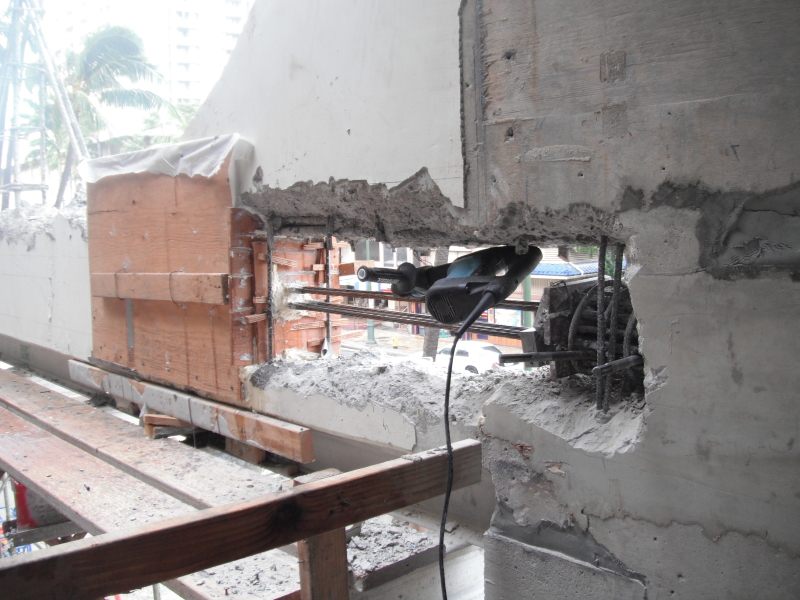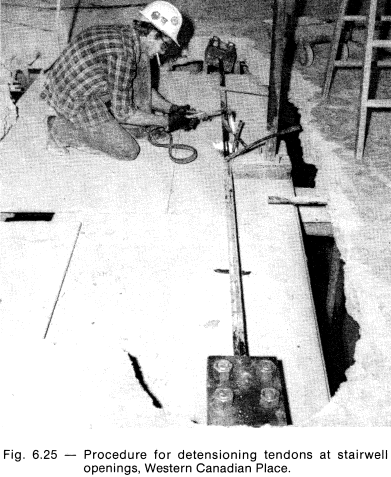dik said:
Is there any type of thermite welding process can can be used to terminate the strands;
No. Do not weld prestressing strand - by arc weld, nor exothermic welding, nor any method that introduces excessive heat.
To quote Kent Preston in his PCI Journal article from 1990 entitled '
Handling Prestressed Concrete Strand':
"When a wire is subjected to excessive heat, the fibers revert to crystals which (since the cooling is not controlled as it is in heat treating) are identical to those in the original hot-rolled rod with an ultimate strength of about 140,000 psi (965 MPa)."
FanGong said:
Can you describe more in detail about the "live-termination" procedures?
I tagged your sketch, as follows:
If L/2 is large, you will have a lot of elastic strain energy that will be released during strand severing. Even if L/2 is only 2 or 3 feet, if the prestress is released suddenly (say by cutting at L/2 with an abrasive cut-off grinder), there will be a shock loading imparted into the wedges of the new anchorages at A and B due to the strand trying to shorten to its unstressed length - such a shock-loading can strip the teeth off the new anchorage wedges. Sometimes oxy-acetylene (OA) heating is used to relax the strand, so as the temp increases the elastic modulus reduces sufficiently that the strand force is gradually relaxed to zero. This is what I term 'live-termination', as compared to your 'conventional technique'.
I prefer abrasive-cutting over OA because OA relaxing is slow and with greased and sheathed strand it often 'smokes' excessively. I usually use two saddle rams, one each at 'A' and 'B' and after installing the new anchor wedges, stoke each ram to say 4", then simultaneously stress each ram to say 15-16 kips (50% of Pj), then de-stress at L/2.
Sudden de-stressing of a free-length of strand is dangerous. The six outer wires of the 'stranded' strand will uncoil - very quickly and in a dangerous manner if not contained.
A recent live-termination that I was involved, with 5 bundled/grouped tendons, the distance between points A and B was about 30 feet - so we chipped a few feet at A and at B and left about 22 feet of concrete remaining between A and B (to 'confine' a severed tendon) and also stripped back the sheath and de-greased the strand at the opening side of A and B and formed a temporary anchorage via an epoxy-bond anchor. We cut the strand behind the ram near A, with an elastic shortening length was only about 3 feet, and then cut the strand behind the ram at B (also with an elastic shortening length of about 3 feet), resulting in less shock loading to the rams, and the cured epoxy 'restrained' the others end of the strand, than if we had to deal with 20+ feet of free-release length.
The following photo shows the 5 tendons, with RHS that remains, and the LHS to be demoed. The timber forms on the LHS is where the temporary epoxy-bond plug was used to 'control' sudden release over 20+ feet.
In this instance we did not have access to the dead and live-end anchorgaes, and no shoring was able to the installed either, so we had to do 'live-terminations'.



